"Once you accept that we're all imperfect, it's the most liberating thing in the world. Then you can go around making mistakes and saying the wrong thing and tripping over on the street and all that and not feel worried." -Paloma Faith
Yet it's the imperfections in the Universe that truly enable the most interesting things within it to exist at all. We covered just a smattering of them here at Starts With A Bang this past week, including:
- Did the Universe need to be born "lumpy" (for Ask Ethan),
- Work out to the Maxx (for our Weekend Diversion),
- Inside the Carina Nebula (for Mostly Mute Monday),
- Gravity's oldest puzzles (a wonderful guest post from Brian Koberlein)
- The most impossible idea from Star Trek,
- and The fundamental limits of knowledge (for Throwback Thursday).
And for those of you who like fiction with your science, check out my latest contribution over at Forbes:
Our voting on which book chapter our Patreon supporters will receive is now finished, and every donor at the $3 level and up will be getting a free electronic copy of Chapter 2: A Relatively Different Story: How Einstein’s Relativity Revolutionized Space, Time, And The Universe! (Get in on this; join and donate today.) That said, let's jump into our Comments of the Week!
From Denier (in response to Chris Mannering) on one's choice of exercise: "I fully believe in the conventional wisdom of the best exercise you can do is any exercise that you will do."
This is maybe the best, most succinct statement summing up my philosophy on exercise I've ever read, although I would perhaps add "safely" into that mix. Have you ever bought a piece of exercise equipment you thought you would use and then didn't? The whole "home gym" fad of the 1980s and 1990s went through so many different incarnations: stationary bikes, treadmills, ellipticals, stairmasters, soloflexes, bowflexes... the list is long, and the one thing they all have in common is they wound up in copious numbers in the classifieds and at Goodwills.
The best exercise is the exercise that you will do, happily, to keep yourself healthy and active. Right now, my exercise-of-choice (and I've gone through a lot of phases in my life) is competing at the traditional Scottish Heavy Athletics at various Highland Games, and weight training is an important part of that. Choose your own poison, of course, but I'm quite happy with mine for the time being. (And no, it wasn't a paid advertisement; there was no conflict of interest at all. The Maxx bench was simply a campaign I saw and was impressed by, and wanted to share. Your mileage may vary.)
Image credit: NASA, ESA, N. Smith (University of California, Berkeley), and The Hubble Heritage Team (STScI/AURA).
From nobody on our Mostly Mute Monday: ""
Seriously, nobody had anything to say about the images you thought you saw inside the Carina Nebula? No one commented on the "psychedelic caterpillar" (above), the "buff gorilla" (below),
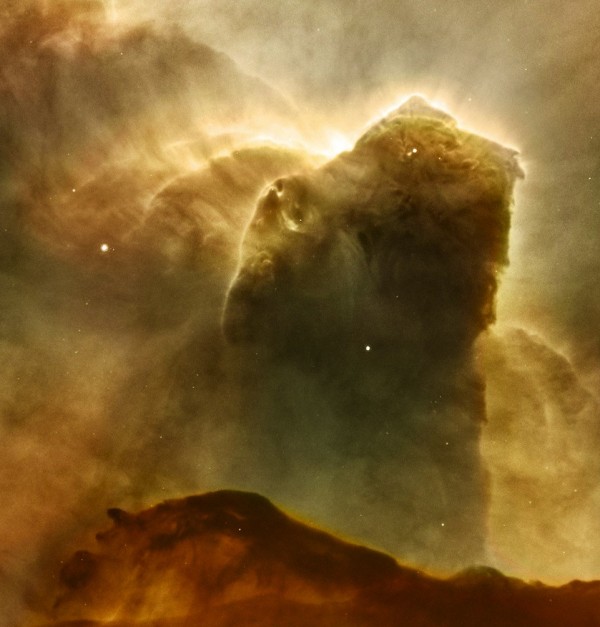 Image credit: NASA, ESA, N. Smith (University of California, Berkeley), and The Hubble Heritage Team (STScI/AURA).
Image credit: NASA, ESA, N. Smith (University of California, Berkeley), and The Hubble Heritage Team (STScI/AURA).
or the "Homer Simpson sperm cell" in the Carina Nebula?
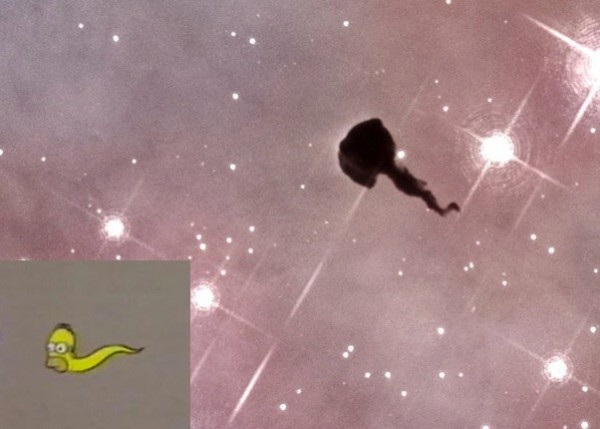 Image credit: NASA, ESA, N. Smith (University of California, Berkeley), and The Hubble Heritage Team (STScI/AURA).
Image credit: NASA, ESA, N. Smith (University of California, Berkeley), and The Hubble Heritage Team (STScI/AURA).
You guys are pretty strange sometimes.
From See Noevo on gravity's big puzzles: "I’ve been told, many times, that gravity, or at least gravitational theory, is just like evolution and evolution theory.
But I’ve never understood that, any of those times."
When people say that gravitational theory and evolution theory are similar to what another, what they usually mean (and what I mean when I say it) are the following set of things:
- There is an extensive suite of data related to these phenomena: the motions of and forces between massive and massless bodies when it comes to gravitation, and the structure, function, population and diversity of living organisms and their component parts over the entire history of Earth when it comes to evolution.
- The theories -- gravitation and evolution -- encompass a huge range of validity and a massive scope. They attempt to describe the entirety of phenomena within their purview.
- They make testable, verifiable predictions under a wide variety of very explicit circumstances.
- And they are eminently falsifiable: if you set up the conditions under which the system should behave in a certain fashion and it does not, you have invalidated the theory.
They also don't explain everything.
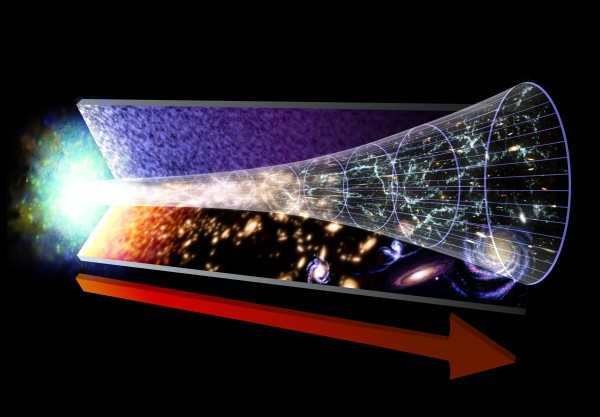 Image credit: NASA / GSFC, via http://cosmictimes.gsfc.nasa.gov/universemashup/archive/pages/big_bang….
Image credit: NASA / GSFC, via http://cosmictimes.gsfc.nasa.gov/universemashup/archive/pages/big_bang….
Gravitation does not explain the Big Bang or the origin of mass. Evolution does not explain the origin of life. They are scientific theories with finite, limited ranges of validity to which their implications extend. But gravitational theory and evolution theory are both robust scientific theories, and in that sense they are alike.
I hope this helps.
From Chris Mannering on gravity and exoplanets: "Just to mention one thing about the exo-planets. It’s true they find one planet. And very often that one planet is huge and close to the star. Which suggests there may have a catastrophic ‘sweep up’ of the whole system into that super Jupiter."
When you go hunting for exoplanets, it is easiest to find the planets that are:
- largest in size,
- closest to their star,
- orbiting the fastest,
- and best aligned with our line-of-sight.
It's easier to find one planet than it is to find many. If we were looking at our Solar System with current techniques, we most probably wouldn't find any planets. There's a small chance we would've found Venus, but the amount of light it blocks as it transits the Sun is very small. There's an even smaller chance we would've found Earth, as its orbital period is longer. It would take decades to find Jupiter or Saturn. And Mercury and Mars are far too small.
 Image credit: Mike Hankey, via http://www.mikesastrophotos.com/planets/amateur-astronomer-strikes-agai….
Image credit: Mike Hankey, via http://www.mikesastrophotos.com/planets/amateur-astronomer-strikes-agai….
We see larger worlds orbiting close in to their stars because they're the easiest ones to see. We find them orbiting smaller stars because it's easier to see the light-blocking signal around a smaller star. But the "sweep up" you talk about? That's an invention of your imagination; that is not suggested by the data at all. Just like "where there's smoke, there's fire," we fully expect that when we find one planet, there are very likely to be many. Our simulations and our observations -- when they become good enough -- both indicate this.
From Wow on the most impossible Star Trek technology: "Pfft.
Holodeck.
Nuff said."
Sure, if you want a holodeck the way Star Trek envisioned it, then yes, I agree, it's probably as impossible as the transporter. But, if you wanted to have the holodeck function entirely in the mind of the one (or ones) experiencing it, there's no reason the "holodeck" couldn't function like this:
I'm just saying, if all you need is for your brain to "perceive" something like this, there might be a way to make it happen. Of course, this is incredibly bad news for the doctor from Star Trek: Voyager...
Sorry, Robert Picardo.
From Sinisa Lazarek on the hazards of transporters: "The transporters can function, in theory, just with a small catch.. Your “old” self gets destroyed. In principal, you could “scan” every single atom and molecule in your body.. while unfortunately disintegrating you in the process, and then have a different machine with just storage tanks of elements at hand, and uber CPU at hand, that will “compose” a new yourself from just carbon, water etc… based on a blueprint obtained during the scan…"
This is the one "technological" issue with transporters that was actually addressed directly in the Star Trek Universe, when an exact duplicate of Commander Riker -- Lieutenant Riker -- was created years ago in a transporter accident in the episode "Second Chances."
Which one is the real Riker? In some ways, both of them; in some ways, neither. The "youness" of you is a lot more than just your atoms and electrons; in fact they cycle through your body on the timescales of months and years, and yet you always remain "you," don't you?
So what is it that makes us who we are? Is it our electrical signals? Surely if you just "shut off" the electricity in your brain, you would cease to be. But is that enough? These are fun questions, and ones I don't know the answer to. But I might be with Scotty on this one... I'll take the shuttle, thank you.
And finally, one last one from Chris Mannering on inflation, "[I have a problem with] the adoption by Guth of the apparent acceleration of the expansion of the universe, as another instance of his inflation.
My problem is that, saying two things that share a generic like ‘inflation’ are aspects of the same underlying thing, is not trivial. It’s a generalization, and it needs a theory in its own right. Guth just seems to make it his own without a solid case."
If you have a problem with this, I have a hunch it's because you don't quite understand what Guth is talking about. Let me explain. Inflation came about for some interesting reasons, but the key realization was that a whole host of problems were solves and new, testable predictions would come about if the Universe had an early phase where it was dominated by a rapid, exponential expansion that came about from energy inherent to space itself. The prototype spacetime for this was known as de Sitter space, which has been well-studied since the 1920s.
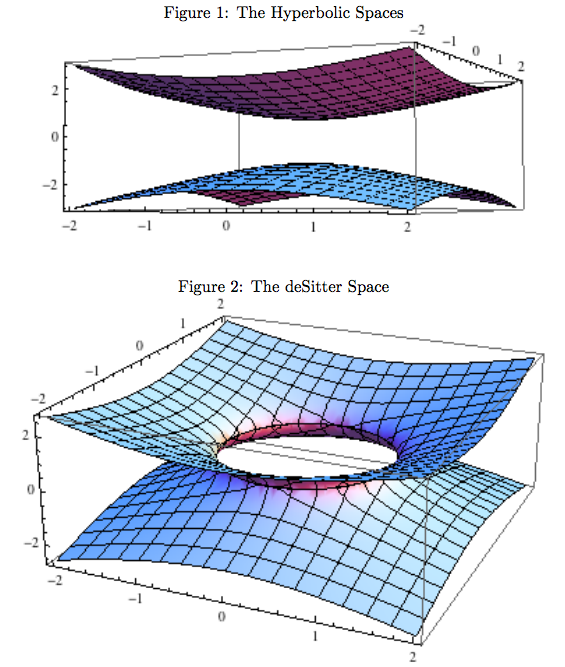 Image credit: Stephanie Alexander, Bill Karr, Brian Freidin, Rob Halliday, Shan Zou, via http://www.math.illinois.edu/igl/projects-spring2012.htm.
Image credit: Stephanie Alexander, Bill Karr, Brian Freidin, Rob Halliday, Shan Zou, via http://www.math.illinois.edu/igl/projects-spring2012.htm.
When dark energy begins dominating the expansion of the Universe, it also results in an exponential expansion with the same parameters, except at a rate that's many, many orders of magnitude slower. It is analogous in its effects on the Universe's expansion, but it is severely different in terms of the amount and rate.
There's an incredibly solid case for what Guth says: they're indistinguishable phenomena, save in terms of the question of "by how much?" The question of whether inflation and dark energy are related to one another is a great open question in physics today, and many models (generically as part of quintessence) link them together.
Thanks for a great week, everyone, and looking forward to the next one!


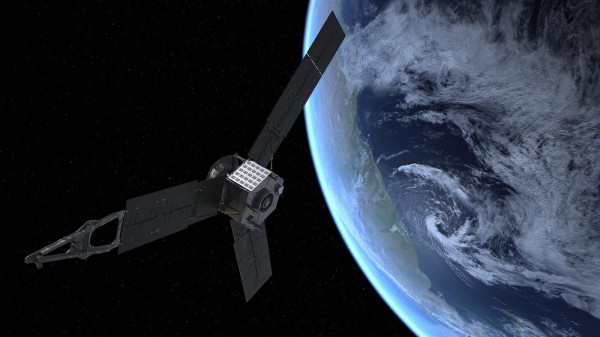
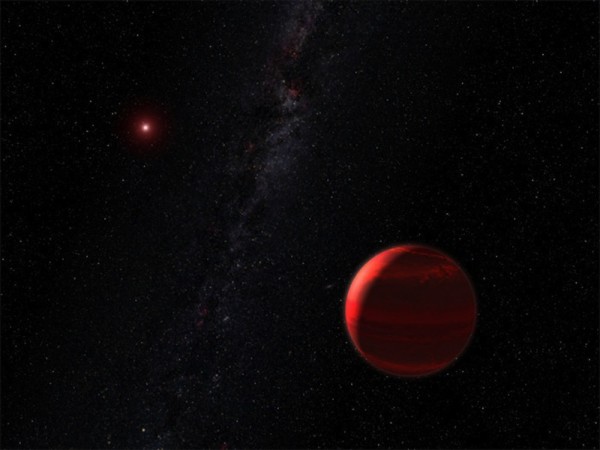
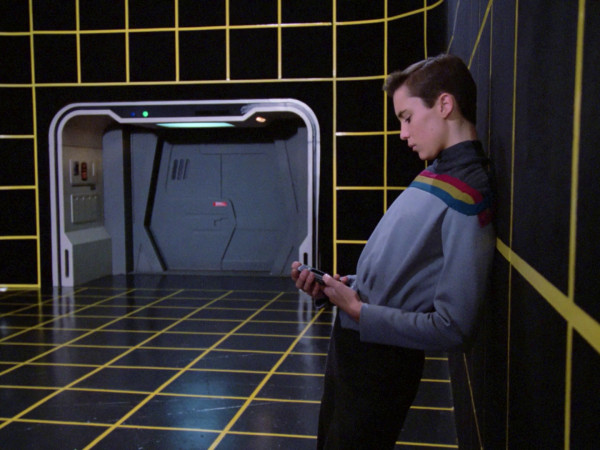
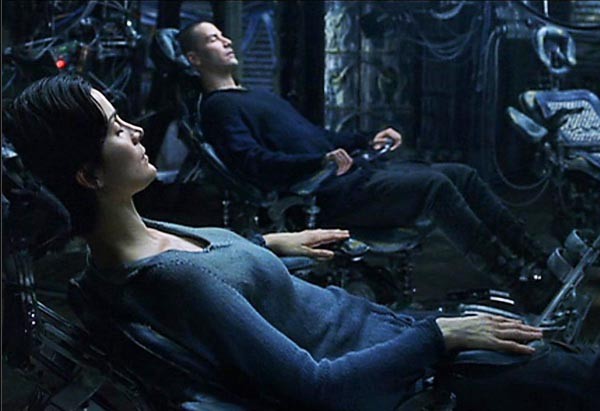

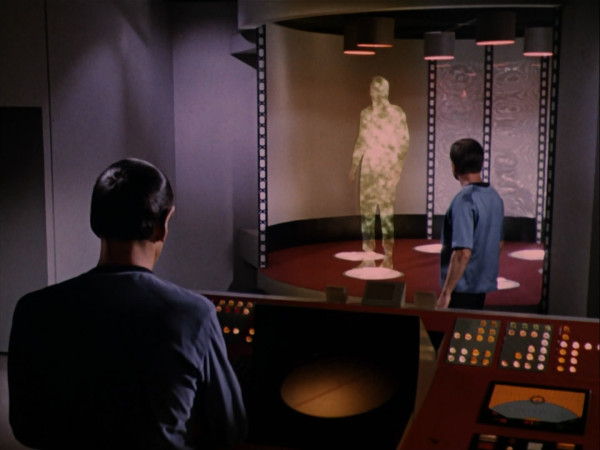

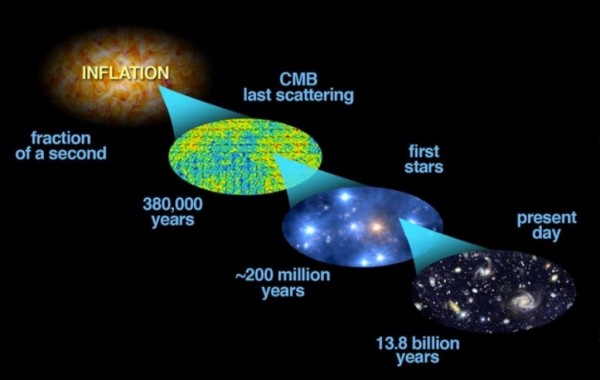
Well, yeah, if you were not talking about Star Trek tech, then the holodeck in other scenarios would be less mythical.
Unfortunately, there was no Matrix plugging in done in the ST holodeck.
For example, the ST transporter: what about the transporter in Contact? A transporter that was moving you through a temporary directed wormhole would
a) look like it destroyed you here
b) recreated you over there
c) taking energy to do so
If we can warp space at will, then there could be a topology that results in a wormhole being much easier, especially of the warped volume were not closely connected with the rest of reality which want massive amounts of negative matter threaded through to keep it open.
So if we use another science fiction world to pretend that it is ST tech, then transporters are 100% fine.
FTL? Go near light speed and you will age a few years traveling to the gamma quadrant. Yes, the world you left behind is much older, but then again, you dropped the reification that has happened in the ST holodeck. So drop the requirement that shorebase time must show FTL.
As to Two Rikers, they are both Riker. They are not the same person, they are two people, but both identical and the only oddity there is that they are just more precisely the same person than identical twins are.
It's no more problematic than using a replicator to make a copy of a cake I am going to eat. They are both cakes and are 100% cakes of equal deliciousness and reality.
So are the Rikers.
It only makes a difference if you believe in Cartesian Duality as inerrant proof and incapable of material reconstruction. IOW one Riker has Riker Soul, the other doesn't. Presumably soulless?
So? We were mute.
That's what you wanted on a Monday!
;-P
Oh, one reason why the holodeck is worse than the transporter (and the replicator in the middle) is that the transporter doesn't (generally) end up with more matter after than before (and a lot of it). The holodeck can produce several real bodies that have at times really existed. If it never existed outside the holodeck, then it would be *slightly* easier than the transporter. Maybe "hard light holograms" a la Red Dwarf. Basically a forcefield created hologram.
The replicator would have to be room sized to equal the holodeck.
The transporter can pay forward the energy needed to transport from the destruction of the matter being sent. Much cheaper energetically.
Ethan, you wrote, "The “youness” of you is a lot more than just your atoms and electrons; in fact they cycle through your body on the timescales of months and years, and yet you always remain “you,” don’t you?"
This is the classical "ship of Theseus" paradox: you have a (wooden) ship which you want to maintain and preserve, so whenever you find a rotting plank, you remove it and replace it with a new one. Obviously, just replacing one plank in the ship doesn't turn it into a new, different ship; it's just been repaired, right? But eventually, over many decades of conservation, every one of the boards which made up the original ship have been removed and replaced (along with the rigging, sails, fixtures, etc.). If the entire object is made of up materials which were never ever part of the original, how can we say that it is the "same" ship? Is it not now a copy of the original? But in that case, when, in the continuous process of conservation, did the original disappear? When the last original plank was replaced? Before that? When?
In the human lifetime, how many times have our cells been replaced? We are not the same person, physically, later in life as we were at birth. Even the replication process is not perfect. Each change introduces slight modification (in some cases, gross) of the copied cells. The only part maintained is our (individual) memories. Those, unfortunately are also prone to error with cell reproduction.
@PJ #5: Not even those memories are static! Our best evidence, in particular from some really awesome nematode studies, is that memory is a dynamical system, where any given memory has to be actively and continually "regenerated" by inter-neural signaling. In the absence of active reinforcement, memories fade and the neural connections are available for repurposing.